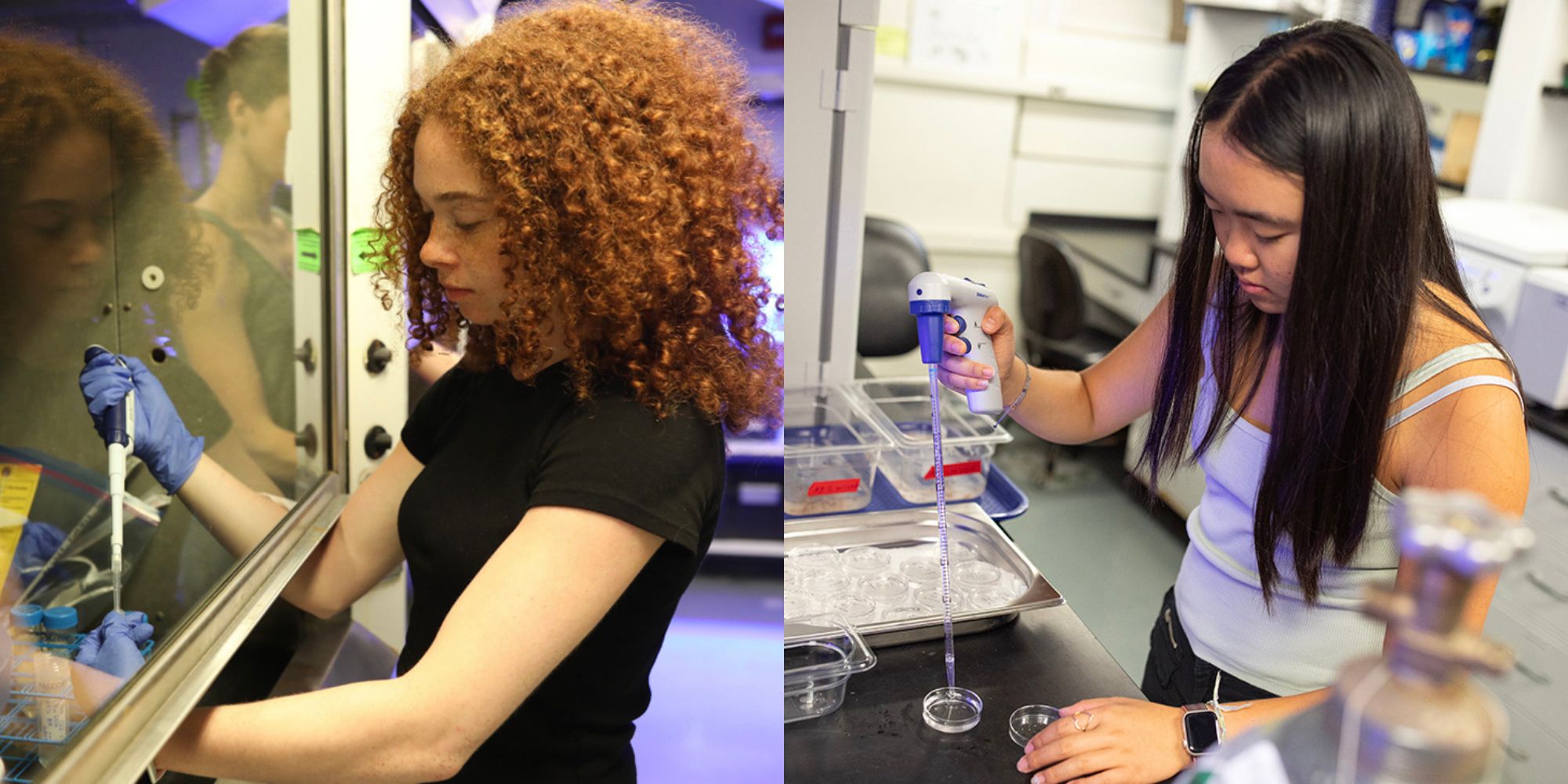Alex Piven pulled a tiny vial from a bucket of ice and held it to a ceiling light on the third floor of Leidy Laboratories. Weeks earlier, specimens of a coral called Astrangia had been exposed to high-stress, warm temperatures, and now Piven was observing them on a regular basis. The process—tediously decalcifying the coral skeletons—is one way to analyze the effects of hotter temperatures on the coral’s tissue.
Seeing the changes was gratifying to Piven, a second-year student in the School of Arts & Sciences (SAS) who knew she wanted to study biology but wasn’t sure what specifically interested her. She applied to Penn because of the abundant research opportunities. As she scanned the biology offerings from the Penn Undergraduate Research Mentoring (PURM) program offered by the Center for Undergraduate Research and Fellowships, the lab of assistant biology professor Katie Barott caught her attention. Barott’s research focuses on how climate change has distressed corals and reefs—across biological scales, from cells to whole organisms.
Piven and Angela Ye, another second-year student in SAS, have spent the summer conducting experiments to explore how resilient coral are when facing this kind of extreme environment change. Piven has been analyzing the cellular structure of a coral local to the Eastern seaboard, comparing corals with and without a history of heat stress. For her work, Ye turned to a model sea anemone used in this kind of coral research; she has been exposing the larvae to various high temperatures, then studying how this affects growth and development over early life stages.
Barott values having undergraduates—specifically recruiting first- and second-years—in her lab. She thinks it’s important to keep the next generation optimistic about the natural world. “With all the doom and gloom out there, people often shut down and lose hope,” Barott says. “But there’s still a lot of life left to save. There are many amazing reefs and habitats, both on land and in the ocean, to save. So, I like getting young people engaged in science and caring about the positive change we can still make in the world. Not all hope is lost. It’s dire. You can’t lie about that. But it’s important to have a sense of hope.”
For the two undergraduates, this summer has represented a gateway into those studies. Piven had done research for a summer in high school and Ye never had before; through PURM, they had a chance to learn about themselves and the ways Penn biologists are thinking about the future.
“I found myself getting really frustrated with people just talking about climate change and not doing anything about it,” Ye says. “I want to contribute ultimately in a way where I can actually take action on the issue. So however small my work is, it gives me a lot of purpose. It opens up my eyes to the things we can do.”
This story is by Matt Gelb. Read more at OMNIA.








